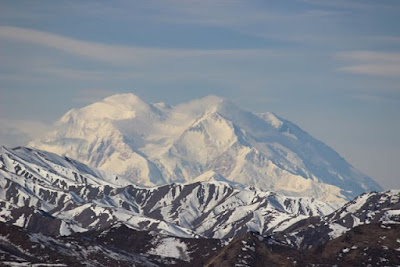A book -
Atul Gawande's Being Mortal
a movie
Healing Voices -
and this
LA Times article about medical error being the third highest cause of death behind heart attacks and cancer
all have come together this week. Their topics overlap somewhat, but more important, they all are great examples of the theme of this blog -
how do we know what we know?
Being Mortal is a doctor's reflections on how the medical profession thinks about and thus handles older patients. Doctors, he tells us, are trained to cure people, but old folks aren't going to get better. Doctors are technicians he tells us, so they fix the various discrete parts rather than the whole person. By extension, as old folks begin to fall, get frail and forgetful, safety, not happiness, becomes the main concern of doctors and nursing homes. What older folks need though, is to have some feeling of control of their lives. Being ripped out of their environments and moved into sterile nursing homes takes away that control and all the cues that remind them of who they are.
He writes extensively about the kinds of care available for people in the latter stages of life. And he gives examples of places that are changing, compromising safety a bit to make being human the top priority - such as the doctor who stuck living (instead of the plastic) plants in every room, parakeets in every room, and dogs and cats throughout the facility and witnessed people coming back to life. He had to overcome staff resistance as well as board and regulatory concerns, but it had huge positive effects on the people in their institution. Here's an excerpt:
"The problem with medicine and the institutions it has spawned for the care of the sick and the old is not that they have had an incorrect view of what makes life significant The problem is that they have had almost no view at all. Medicine's focus is narrow. Medical professionals concentrate on repair of health, not sustenance of the soul. Yet --- and this is the painful paradox --- we have decided that they should be the ones who largely define how we live in our waning days. For more than half a century now, we have treated the trials of sickness, aging, and mortality as medical concerns. It's been an experiment in social engineering, putting our fates in the hands of people valued more for their technical prowess than for their understanding of human needs.
That experiment has failed. "
Having just watched my mother go through this, I find all this very compelling. I first learned about the book about a year ago when my mother's neighbor recommended it and said, "Steve, keeping your mom at home was the right decision." It was reassuring at the time, but I didn't start to read the book until it became this month's choice in my book club.
Keeping her at home where she could eat what she wanted to eat, when she wanted to eat it, at her own dining table, on her own dishes, seemed important. Letting her sit in her wheel chair on her front porch among the plants and flowers she had tended for 60 years, seemed important. We were incredibly lucky to find a caregiver she clicked with and to be able to pay for the caregiver and regular flights to Los Angeles. That's a luxury.
And now I'm reading it with myself in mind. How will my family and I deal with me when I get to that point of not being able to care for myself? Ideally, I'll just sleep in one morning never to awaken just as I'm getting to that point, but that's wishful thinking.
Healing Voices was a film we saw this week at the Bear Tooth about how the medical field thinks about mental health, the influence of the drug companies on doctors, and the need for patients to be treated as whole people and not to be labeled in ways that dismiss them as unable to be a part of their own recovery. Here's the trailer:
Finally, the identification of
medical error as the third highest cause of death after heart attacks and cancer, is another example. Error wasn't considered a disease, so it wasn't listed as the cause of death, and so it wasn't identified as something to be addressed with the same urgency as diseases. Again - how one sees the world, classifies what one sees, affects profoundly what one notices, and thus the options available for making effective changes. An excerpt:
"The CDC currently has no good way of tracking deaths that result from medical mistakes, the authors wrote. The agency’s statistics are pulled from the International Classification of Diseases codes that appear on death certificates. These codes were instituted in 1949 and do not include any that indicate a death was the result of a mistake in the hospital."
All three examples involve a mental picture of the world that tells the person (or group of people) what the important values are and what parts of the world to pay attention to. In each of these cases, those models left out very important aspects of the situations they were trying to improve. Thus their solutions were inadequate and even harmful.
Each of us filter the world around us with various models that focus on some things and block out other. I find no other explanation to why people watching the same presidential election, come to wildly different conclusions about whom to vote for. It's important to constantly be testing one's own models. It's also important to avoid simply dismiss the other guy as 'crazy,' but to try to understand the model he's using to rationally get to his very different conclusions. That's when communication and change can happen.

































